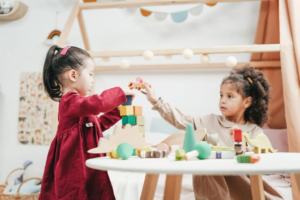The image source is Pexels.
The education sector was one of the badly affected sectors by the COVID-19 pandemic. It led to the closure of schools around the globe, rendering more than one billion students out of school. But despite the negative effect it has had on the education sector, it has opened a new world of opportunities for education at home. Students are continuing to learn through various means, even though they cannot physically attend classes. Online learning has proven to be a huge success this past year, as more and more students and schools continue to embrace it. Here are five ways to improve education at home during the pandemic.
Make it a routine
The fastest way to master a habit is to incorporate it into your daily routine. Learning at home may be a new concept to many students. Therefore it is likely to take a while for them to adjust to it. Parents can help their children learn easier by incorporating online classes as part of their kids’ routines while they’re at home. Set aside a few hours, say 2-3 hours, each day, in which the student can do all forms of learning. Schools and teachers can discuss and organise timetables that are flexible enough to fit every student’s schedule. Since technology adoption in adjusting to learning at home has been a success, most schools will likely retain this form of teaching even after the pandemic. Therefore, the sooner parents and children adjust to this new normal, the better for them.
Sensitise caregivers on online education
In line with the point discussed above, it is also essential to inform guardians, babysitters and parents on the basics of online learning. Learning at home can be quite a hassle, especially if the environment is not as conducive. The schools should inform parents of when and how the classes will take place so that they can provide their children with the peaceful environment they need to study. Younger students may require help setting up different devices for their online classes. Therefore, their guardians must understand how to set them up to assist. Adjusting to education at home can be challenging, but when everyone is contributing to the change, it makes the process much better.
Keep in touch with the child’s education facility
Aside from setting aside a few hours for learning every day, parents should also show interest in their children’s learning. You can guide them on using the different gadgets required, such as laptops and microphones, and also keep tabs with the school to be able to notify them of any inconvenience, such as power outages. Understanding different learning aids such as online IDE is crucial for guardians as well as students so that they(guardians) can be able to assist their children in case of any problems. Maintaining communication with the respective schools will help smoothen the transition from physical to online classes too.
Encourage participation from the child
Just attending classes and taking notes may seem like enough effort from the student’s side, but it won’t make much difference if they are not actively engaging in the classes. Teachers should ask questions and direct students to talk and engage during the classes actively, and parents should encourage their children to participate actively. When this much effort is applied, adjusting will come naturally, enabling the student to embrace education at home as the new form of learning. It will also jog the student’s minds and improve their critical thinking skills. Education at home has so many benefits for the student when they actively participate.
Create a ‘Study zone’ to tune the mind
Another way to improve education at home may be to improve the physical environment. The student’s surroundings play a significant role in how they process information, and different learning environments can impact the attention span of a child. Set aside a room for the child to study in silence, away from the distractions of family and friends. A conducive environment where they can be alone with the teacher and their fellow students on a zoom call will allow the child to focus entirely on the class in session. This improves their attention span, and they’re more likely to retain information and participate actively during the class. Compared to learning in a public space such as the living room, the child will gain more knowledge away from everyday distractions.
Conclusion
Education at home is essential during this period, as it gives the students a purpose to look forward to even as the world recovers from the chaos. These tips will enable you and your child/students to transition smoothly into the future of learning, which is online education.

